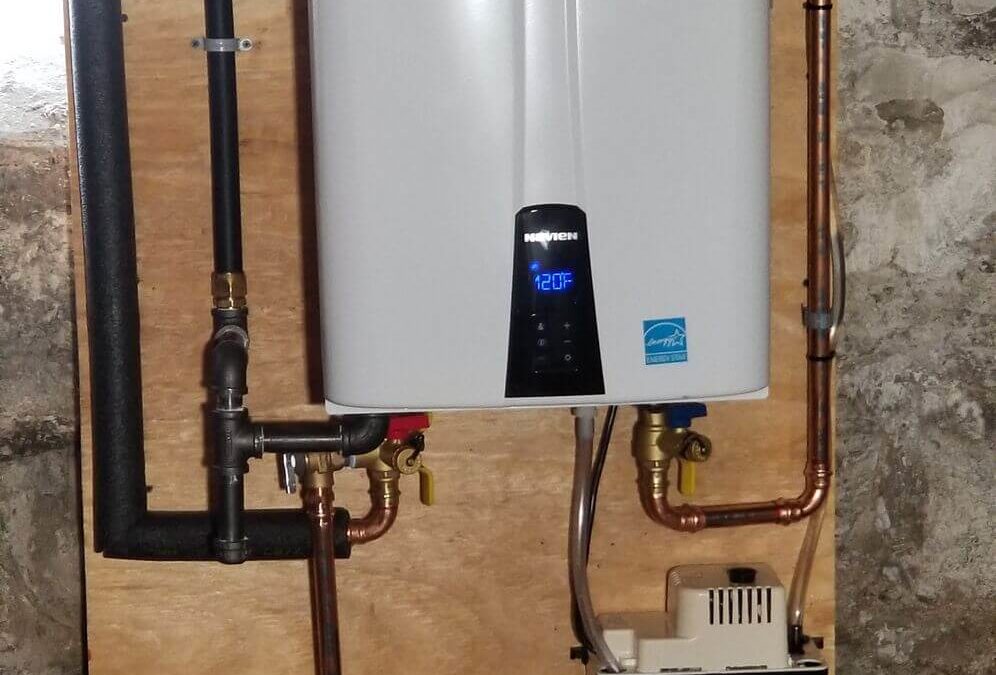When it comes to tankless water heaters, size really does matter. If you have a unit installed that’s too small, you won’t have enough hot water to meet your household’s needs. On the other hand, an over-sized unit will cost more to purchase and operate than what’s needed, nullifying one of the biggest benefits of tankless water heaters—energy efficiency! Rest assured, as an essential business we are open and taking very necessary precautions to ensure your safety upon entering customers’ homes by sanitizing thoroughly on a daily basis, hand washing prior to and after calls, carrying gloves and masks on all trucks, social distancing, and more.
In a nutshell, the tankless water heater size must be just right to meet household demand. In a previous blog, we walked you through four signs you may need a new water heater. Consider the two factors that go into sizing a tankless unit so you know what to install in your home if you do in fact you are in need of a new unit.
FLOW RATE
The flow rate is how much hot water the tankless unit can produce, in gallons per minute (gpm). You want the unit you install to provide a high enough flow rate to meet your household’s needs. Keep in mind that tankless water heaters will typically limit your family to one or two hot water activities at a time, depending on the size of the water heater you install.
Examples of efficient, low-flow hot water plumbing fixtures include:
- Bathroom sink faucet – 1.0 gpm
- Shower-head – 2.5 gpm
- Bathtub faucet – 4.0 gpm
- Kitchen faucet – 1.5 gpm
- Dishwasher – 1.5 gpm
- Washing machine – 2.0 gpm
Now, determine how many of these hot water fixtures you expect to use during peak times in your household. For instance, if you have two bathrooms and want two people to be able to take a bath at the same, you’ll need a flow rate of around 8 gpm, depending on the precise flow of your bathtub faucet. Similarly, if you want two people to be able to take a shower at the same time, you will need around 5 pgm.
TEMPERATURE RISE
Knowing the flow rate you want is a good place to start, but that’s not all you need to know. You need to consider the temperature of the water when it goes in and how hot it should be when it comes out. This is known as the temperature rise. Seasonal shifts change the water temperature coming, but when sizing a tankless water heater, you need to know the average groundwater temperature in your region.
There are helpful resources such as USGS where you can find the groundwater temperature (in degrees) for your area. The temperature you want at the tap ranges from 102 degrees for the bathtub and shower to 120 degrees for the dishwasher and washing machine. Starting with 52-degree water, this means you need a tankless unit capable of delivering a temperature rise of 50 to 68 degrees.
TANKLESS WATER HEATER SELECTION
As you shop around for tankless water heaters, you’ll see their sizes are listed as a flow rate and temperature rise combined. Both of these factors are critical to consider when finding the appropriate sized tankless water heater. If you need assistance selecting the appropriate unit for your residence or business, we’re here to help!
SCHEDULE TANKLESS WATER HEATER INSTALLATION
The water heater experts at Hobson Plumbing & Heating can help you determine the proper tankless water heater size for your family’s needs. We perform all the calculations to help you determine the right unit for your household’s needs when it comes to purchase price, performance, and energy efficiency.
If you move forward with the tankless water heater installation, we can assure you our experts at Hobson Plumbing & Heating come highly recommended for the job. We are fully trained, licensed, certified, and bonded, and our plumbers are background-checked and drug-tested for your peace of mind. We have a proven track record of providing excellent plumbing service to our residential and commercial customers in the Chicagoland area.
Call Hobson Plumbing & Heating today at 630.761.3400 or contact us to schedule a tankless water heater consultation.

